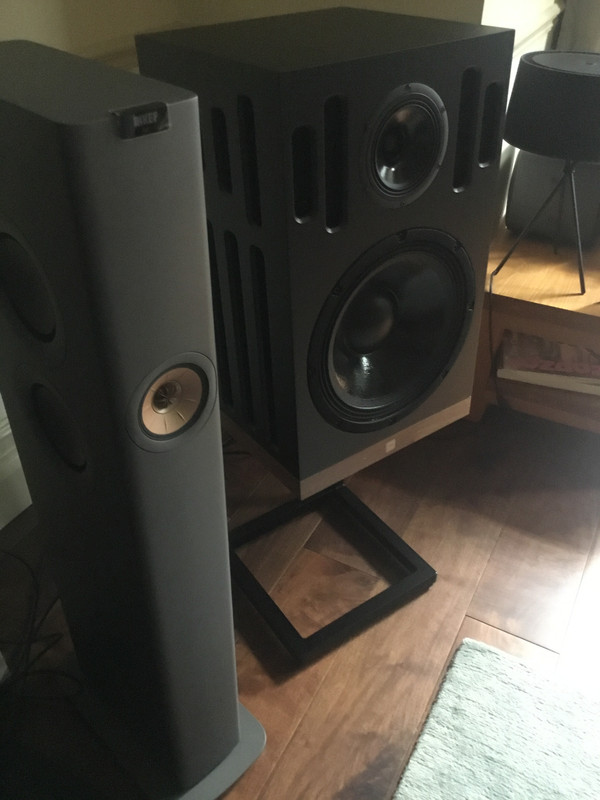Yes all the details are in the main development thread (
https://www.audiosciencereview.com/...active-speakers-prototype-build-thread.28255/), and most is covered on the product page as well:
https://www.sigbergaudio.no/products/sigberg-audio-manta-1-active-speakers
I will however of course be happy to try to write quick summary in context of your questions!
 "You have 2x 10” and 1x 12” per speaker? Do I have that correct?"
"You have 2x 10” and 1x 12” per speaker? Do I have that correct?"
Essentially yes. This is a 4-way speaker system where the 4th way (low end) is covered by subwoofers. The power and capacity of this 4th way is then by design somewhat up to the customer (depending on which of our subwoofers are chosen, and how many). Our subwoofers are delivered with a crossover that is designed to match our speakers perfectly. So all
@Purité Audio had to was basically plug it all in, and they're good to go. No messing around with crossovers and phase.
To truly match the Manta's maximum capacity, you will require four 10D subwoofers.
@Purité Audio has two 10D subwoofers (which is plenty for almost any domestic situation), so this is where you will find the four 10" drivers, as each 10D subwoofer has dual 10" drivers.
"The cardioid is done by which drivers? And how?" / What is config of 12”? "Sealed, cardioid, dipole, etc?" / "Cardioid low cutoff" / "Freq coverage of each driver?"
The speakers have dual cardioid systems, and they are both passive (the cardioid pattern is created by acoustic vents, not by active drivers).
The lower cardioid system is covered by the 12" driver, which covers 90-600hz.
The upper cardiooid system is covered by the coax driver, which covers 600-20,000hz (crossover between midrange and tweeter is ~2,500hz).
"why did you just not go with full range tower design? Pros/cons?"
We already had the SBS.1 which is by design built to play with subwoofers, and this has proven to be a very successful design. So the speakers don't have bass drivers. Instead we can select drivers with less mass, different suspension and higher sensitivity, specifically designed for midbass duty and with extreme dynamic capacity. This is why both the SBS.1 and the Manta can play insanely loud (translating to inaudible compression and distortion at any reasonable level) despite the modest size.
In short: This system approach enables us to create 4-way speakers with dedicated midbass drivers and very high dynamic capacity.




